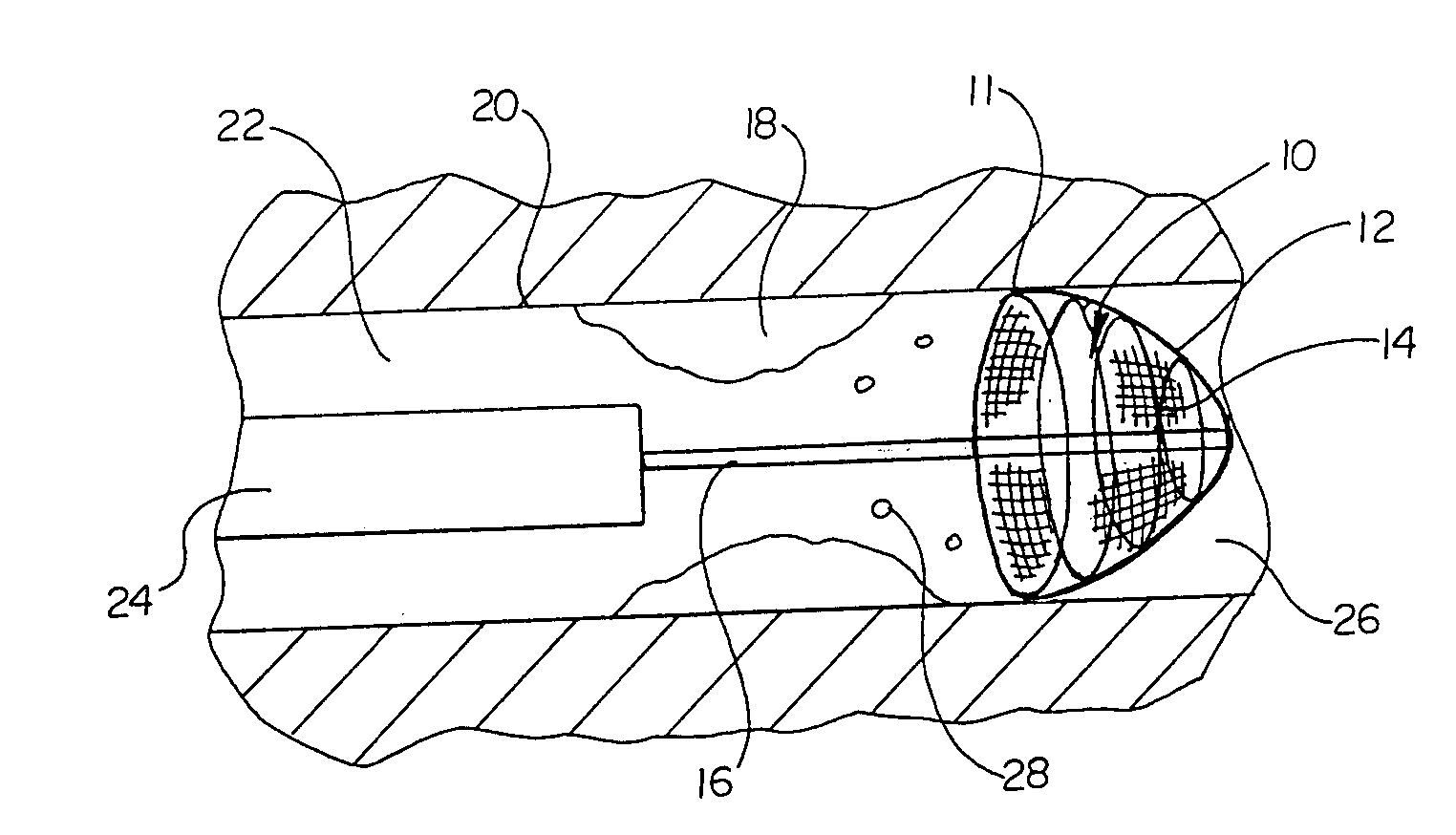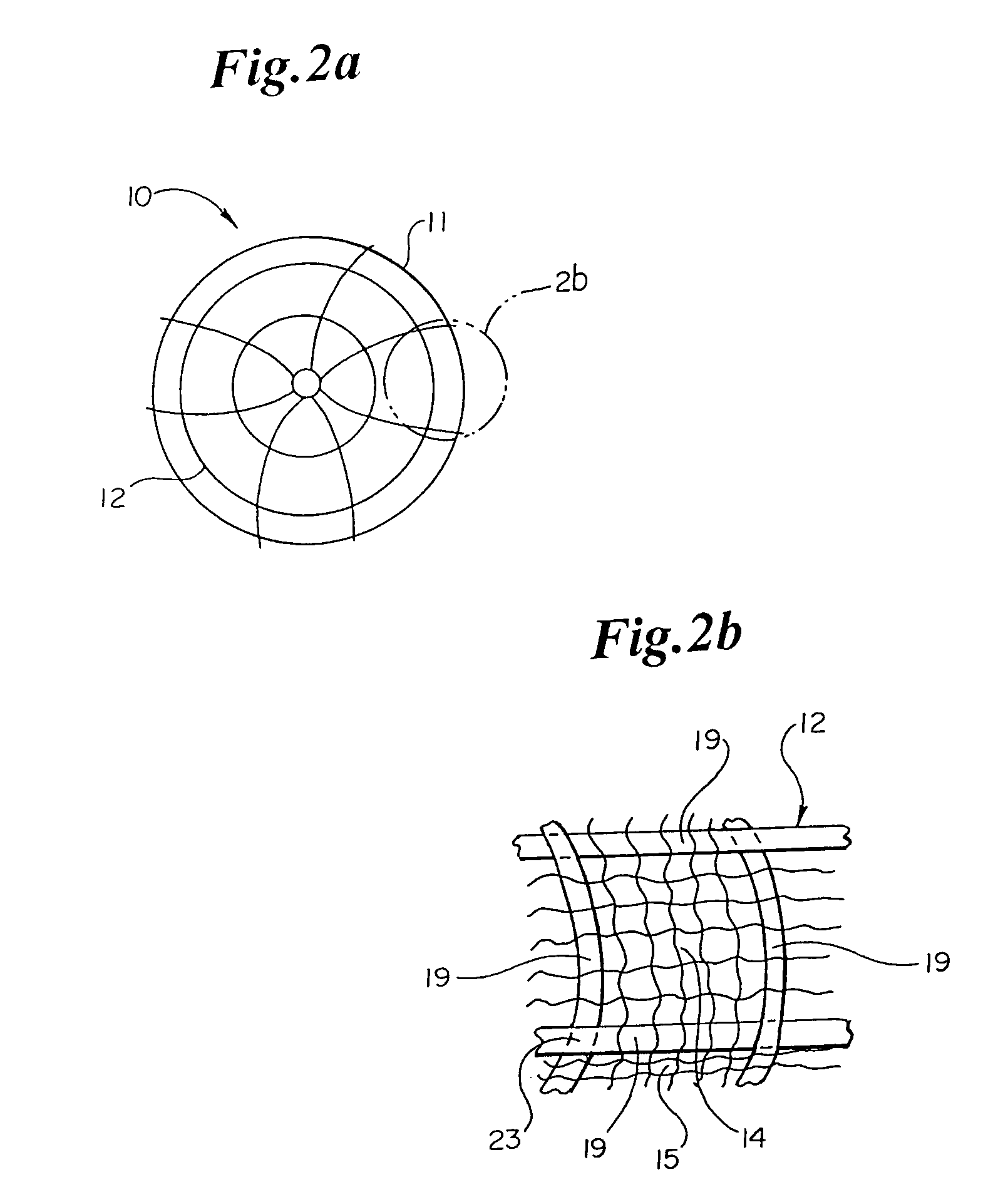Distal protection device with electrospun polymer fiber matrix
- Summary
- Abstract
- Description
- Claims
- Application Information
AI Technical Summary
Benefits of technology
Problems solved by technology
Method used
Image
Examples
Embodiment Construction
[0033] The present invention embodies an expandable filter 10 for use in a distal protection device 36. The distal protection device 36 comprises the filter 10 attached to a guidewire 16. The protection device 36 has an expanded configuration (as seen in FIG. 4) and a collapsed configuration (as seen in FIG. 3). In the expanded configuration the filter 10 has a periphery 11 extending outwardly from guidewire 16. In the collapsed configuration of FIG. 3, the periphery 11 of the filter 10 collapses towards the guidewire 16. The filter 10 has a wire frame 12 over which is overlain a fiber matrix 14. The filter 10 thereby defines a plurality of pores 15. The pores 15 have a boundary formed by one or more fibers, wires, or a combination thereof.
[0034] In use, the filter 10 is positioned in a lumen 22 by advancing the distal protection device 36 through the lumen 22 in the collapsed configuration shown in FIG. 3. Once positioned, the distal protection device is deployed into the expanded...
PUM
 Login to View More
Login to View More Abstract
Description
Claims
Application Information
 Login to View More
Login to View More - R&D
- Intellectual Property
- Life Sciences
- Materials
- Tech Scout
- Unparalleled Data Quality
- Higher Quality Content
- 60% Fewer Hallucinations
Browse by: Latest US Patents, China's latest patents, Technical Efficacy Thesaurus, Application Domain, Technology Topic, Popular Technical Reports.
© 2025 PatSnap. All rights reserved.Legal|Privacy policy|Modern Slavery Act Transparency Statement|Sitemap|About US| Contact US: help@patsnap.com



